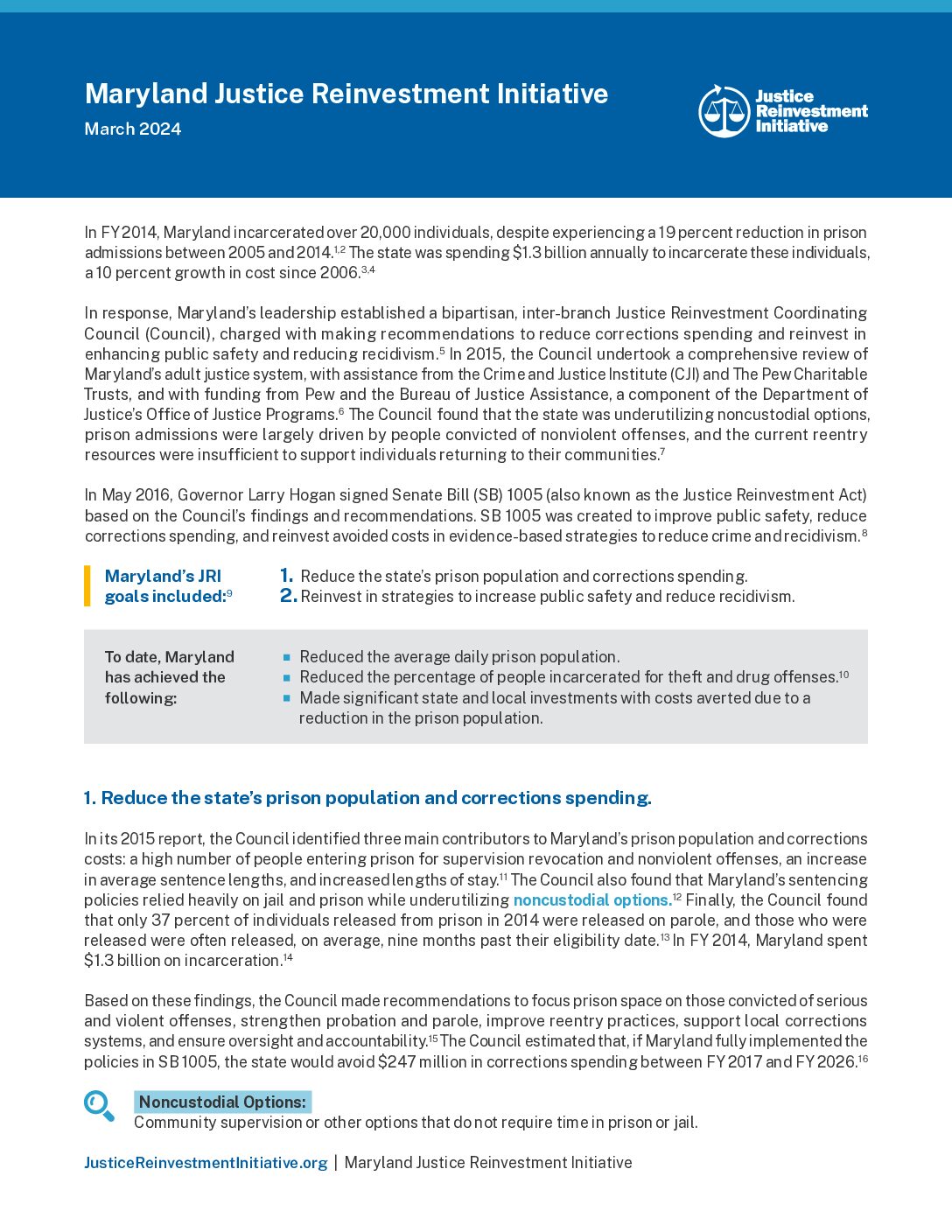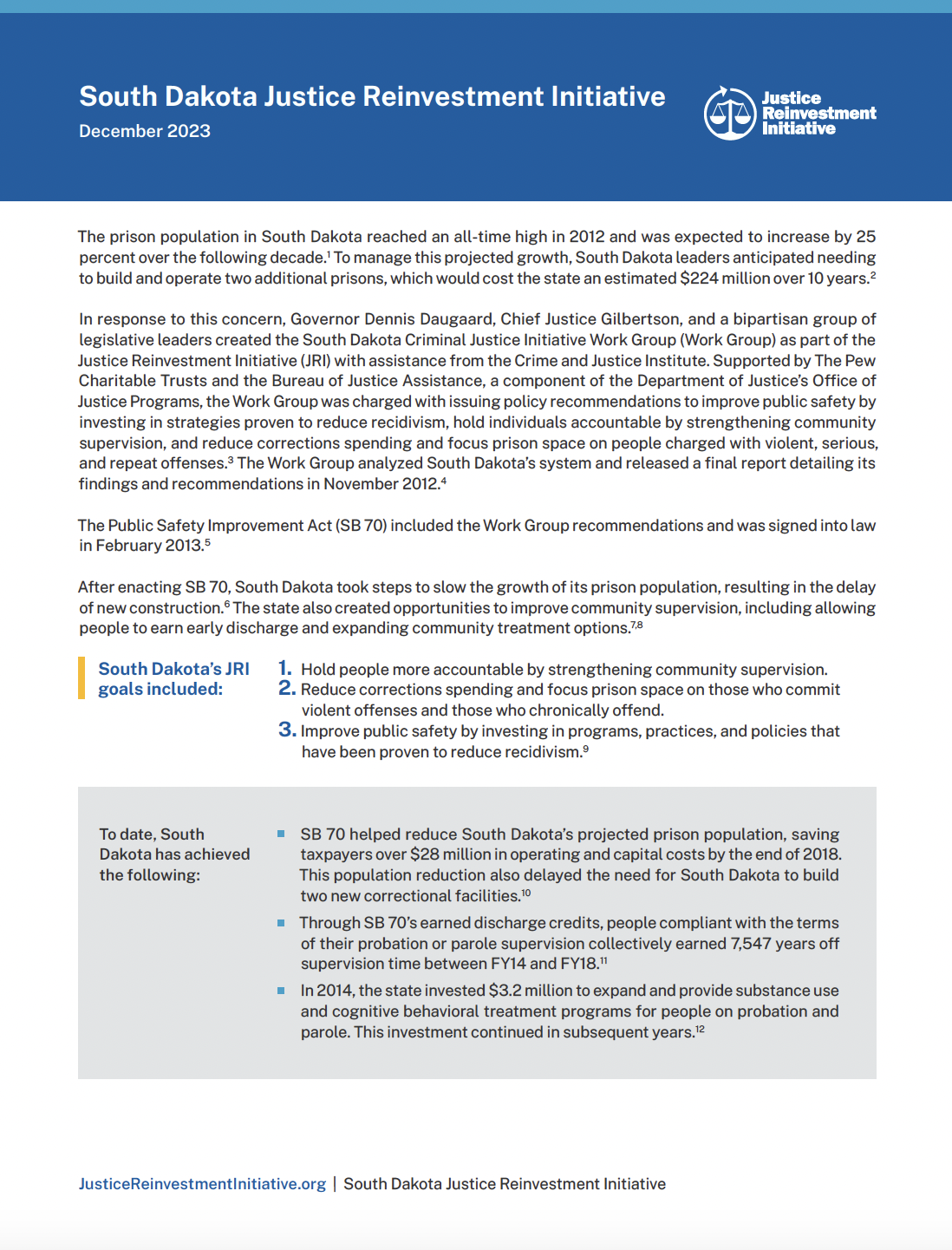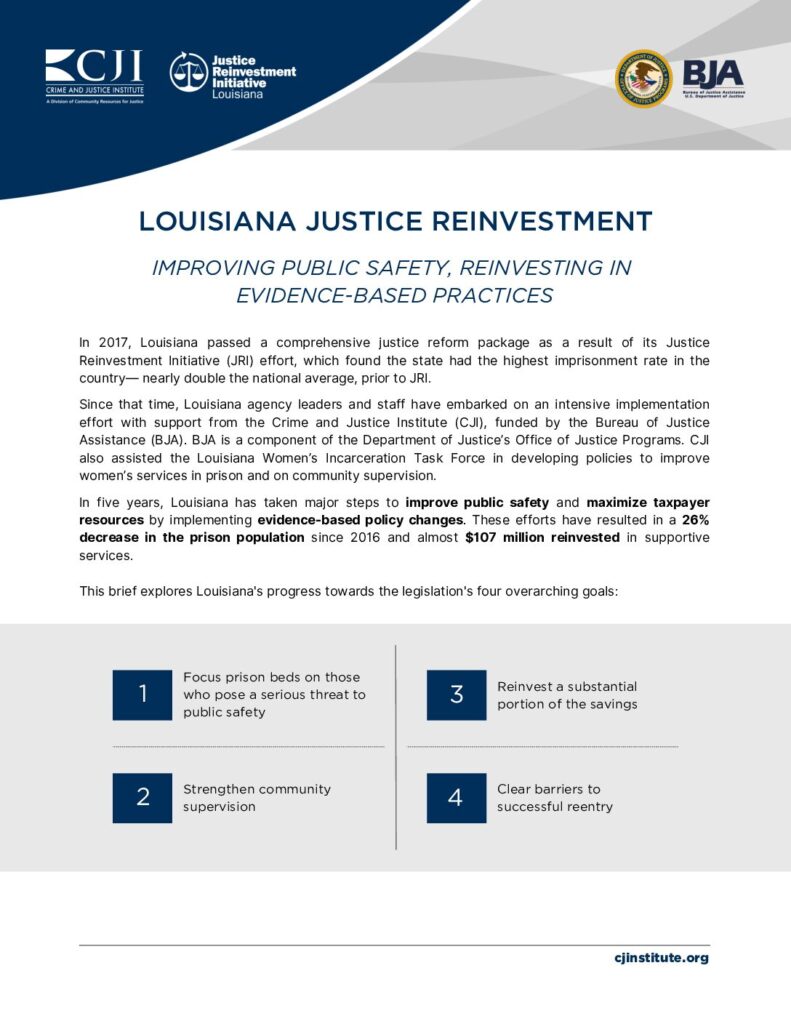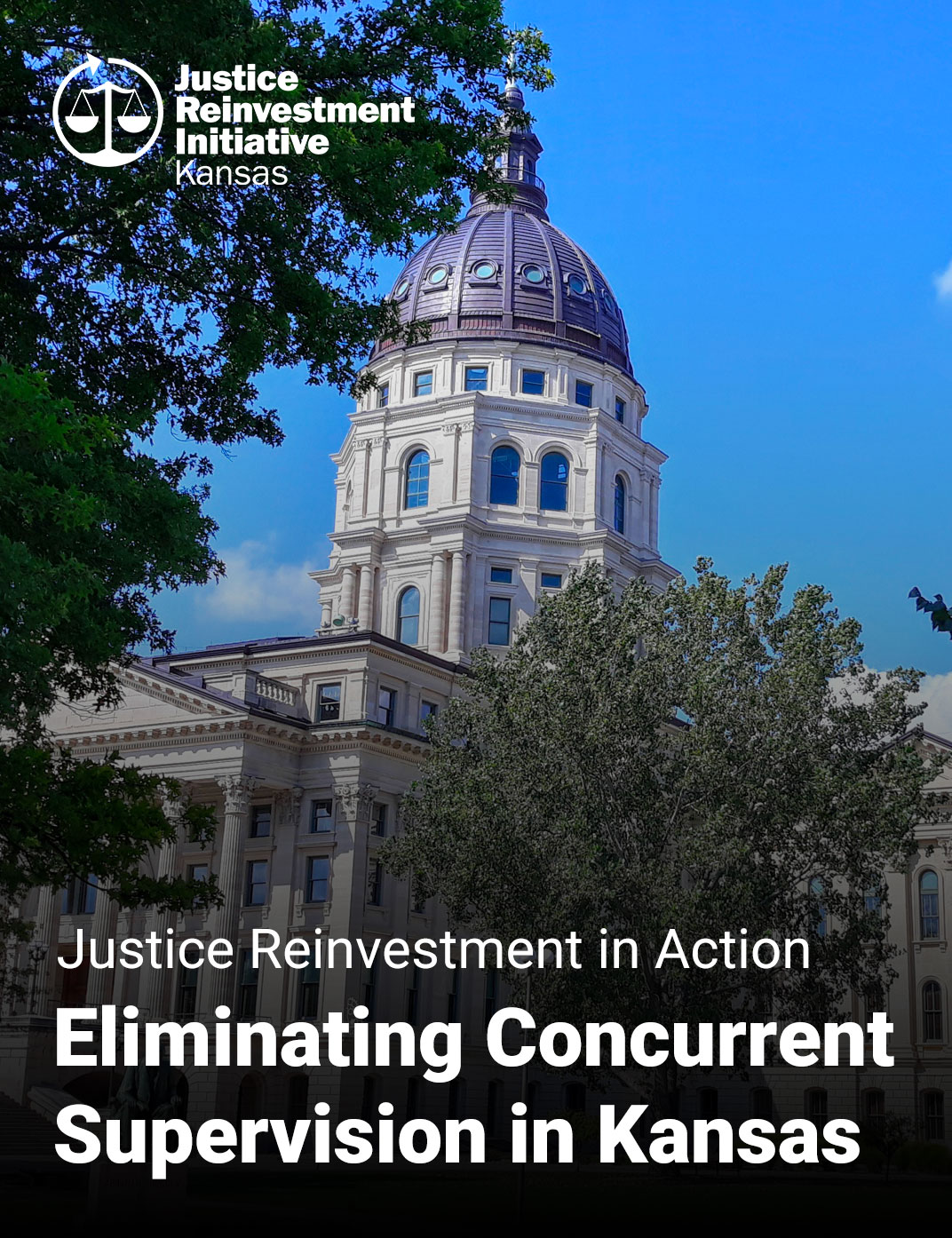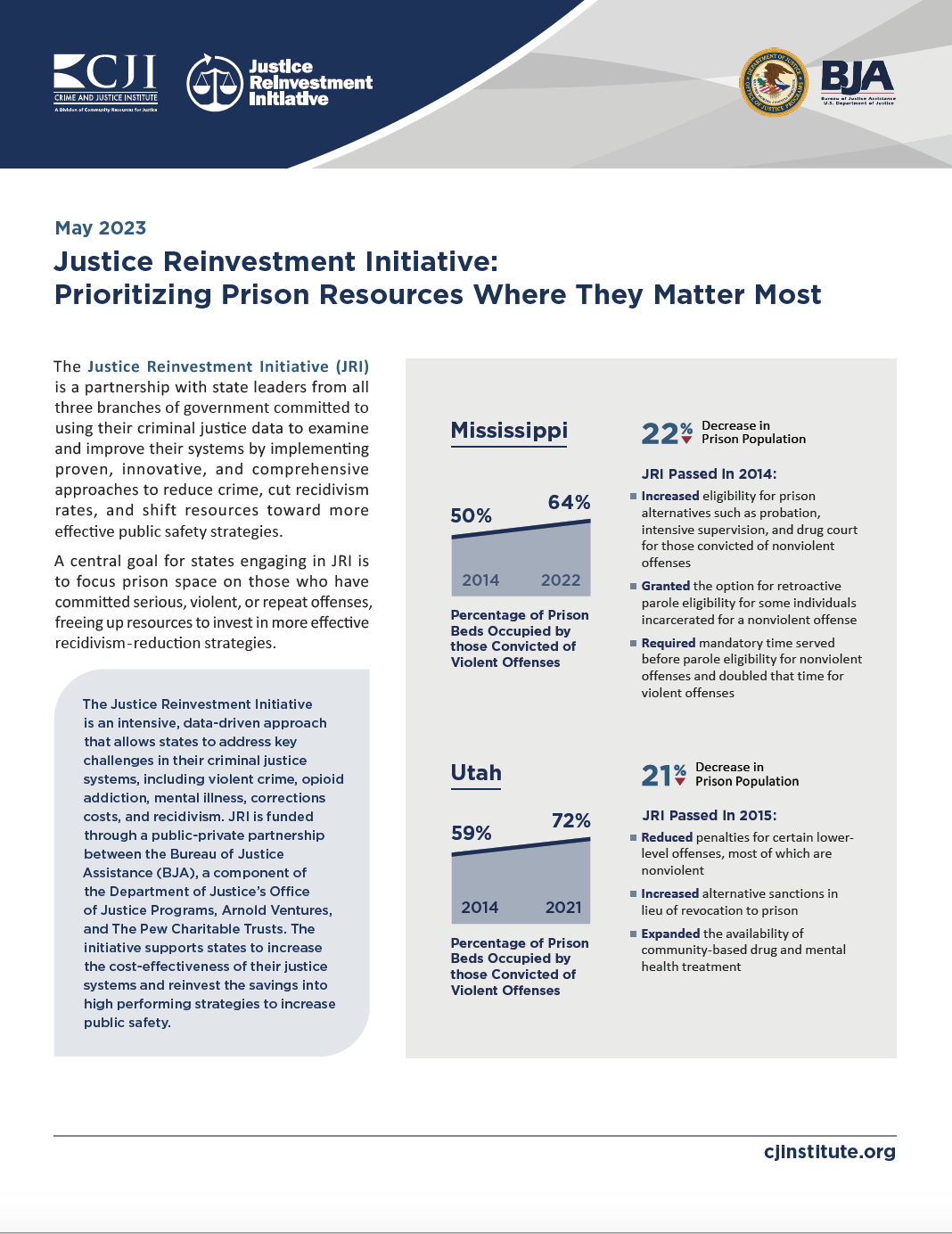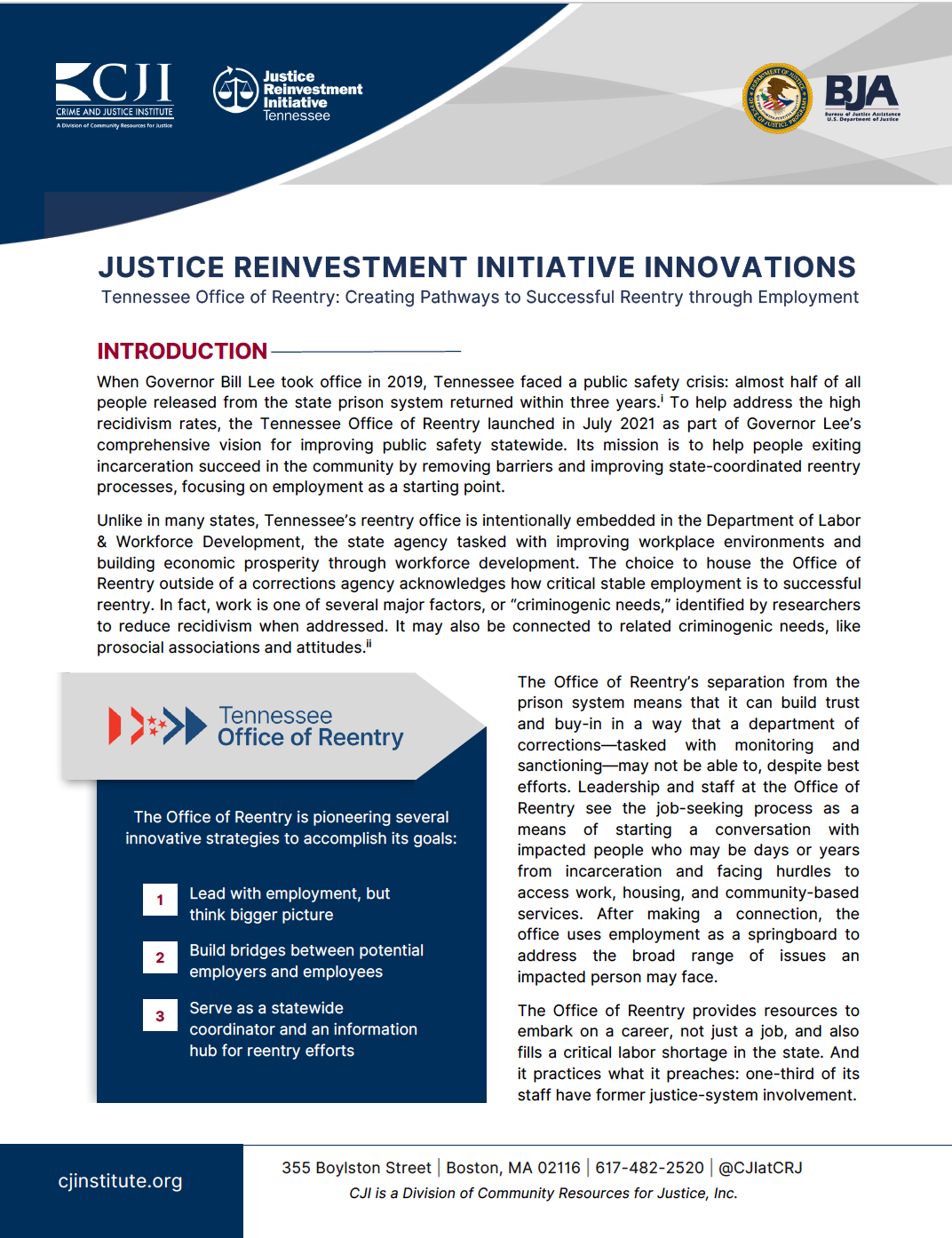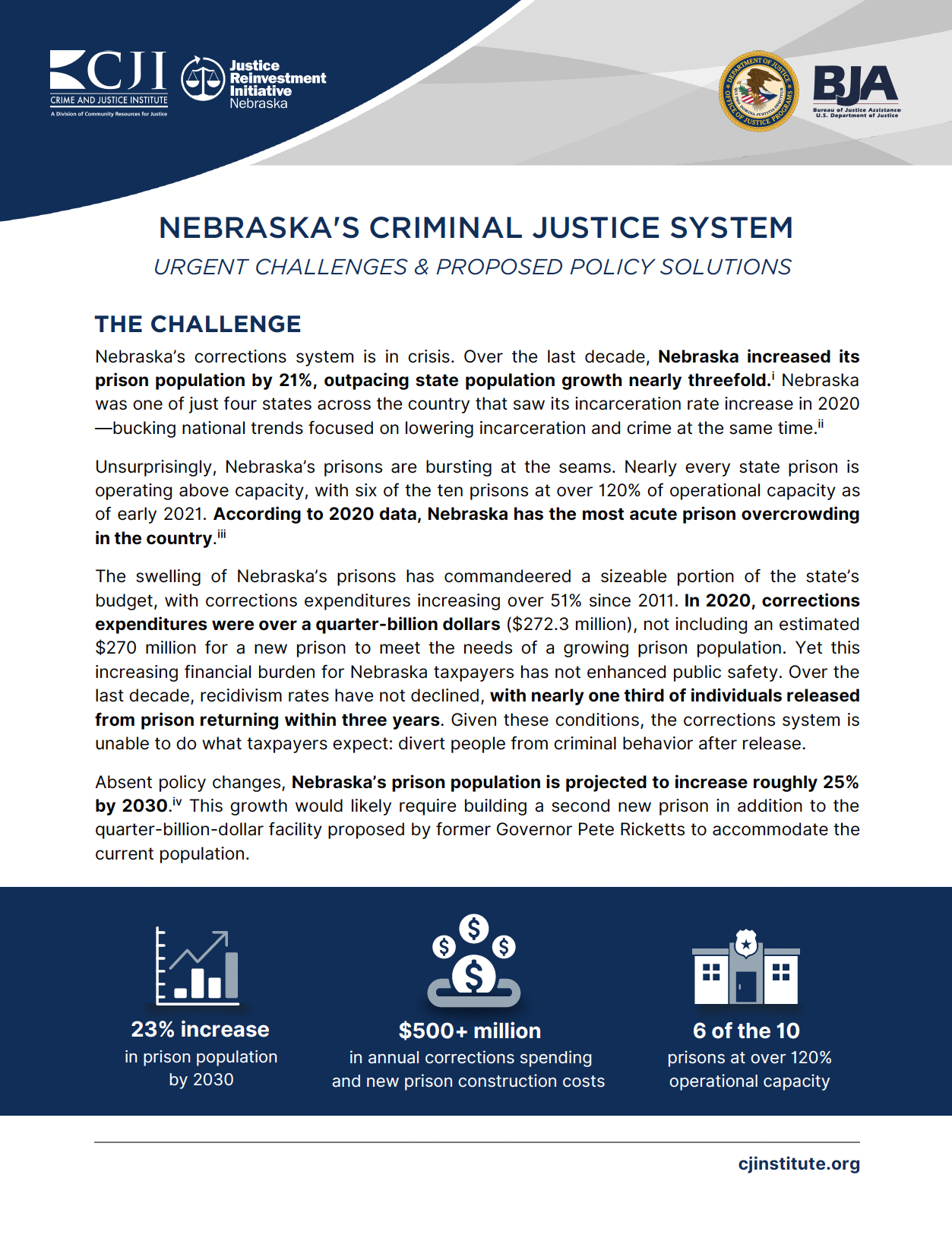
The Justice Reinvestment Initiative in Iowa: Aligning Public Safety and Supervision Practices
This brief summarizes Iowa's JRI effort, which began in 2021 and involved an analysis of the state's criminal justice responses after March 2020 and the potential impact on public safety and community-based corrections.





